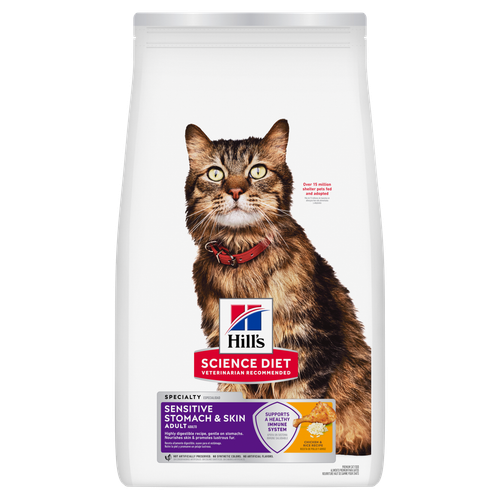

Seeing your dog in discomfort is hard, especially if you're not sure what's wrong. In many cases, such as with dog ear infections, there are several signs that can indicate many potential causes. But with the support of your veterinarian, most dog ear infections can be cleared up quickly and easily. Here's what you need to know about dog ear infections and how to help your dog feel their best.
Dog Ear Infection Symptoms
One of the most common signs that your dog is dealing with an ear infection is itchy ears, but that isn't always as easy to recognize as you would think. While some dogs will scratch their ears more frequently, others deal with it in less obvious ways. This might look like:
- Redness or swelling inside the ear
- Withdrawing or leaning in for more when you pet their head and ears
- Shaking their head repeatedly
- Rubbing the side of their head along the floor
- Digging their back foot into their ear
- Holding their head crooked
- Brown, black or green debris coming from the ear
- Ear odor
Your dog may not show all of these signs, but even one of them could be a sign of a dog ear infection. If you notice any of these signs, it's best to get your pup to the vet as soon as possible for an accurate diagnosis and treatment.

Types of Dog Ear Infections
Dog ear infections come in different types, depending on which part of the ear is affected — and knowing the basics can help you better understand your vet's diagnosis and care plan.
Dog ears have several parts. The pinna is the floppy (or standing up, depending on the breed) part of the ear that we usually think of when we think of dog ears. This is an extension of the skin. Just inside of that is the external ear canal, which is the part we can see when we look into the dog's ear. Deeper in is the eardrum. Vets can see the eardrum using a special instrument called an otoscope. Beyond the eardrum are the middle and inner ears, which sit deep inside the skull and can't be seen during a regular exam. These areas may require advanced imaging — like an MRI or CT scan—to evaluate them properly if a more serious infection is suspected.
Outer Ear Canal
The most common type of ear infection in dogs — known as otitis externa — affects the outer ear canal. The external ear canal is especially prone to problems because it's warm, dark and sometimes traps moisture — making it a perfect spot for bacteria or yeast to grow. Dogs with this type of infection will likely show some combination of the signs discussed previously, such as itching their ears.
Middle Ear
Infections of the middle ear can occur when the eardrum is inflamed, ruptured or damaged. While most cases of otitis externa involve some level of inflammation to the eardrum, it's not always the case. Infections of the middle ear are not nearly as common as outer ear canal infections. It would be unusual to have a middle ear infection without the external canal being affected, but it can occasionally happen. The clinical signs of a middle ear infection include discomfort, shaking the head, head tilt, and rapid and involuntary eye movements.
Inner Ear
Infections of the inner ear are rare, but they do happen. These types of infections can be serious, since they can affect nerves coming off the brain. Symptoms can include facial paralysis, the head tilting to one side, eyes darting side to side or even the dog rolling in a circle. Inner ear infections are treated with systemic medication, since nothing applied to the external ear will reach the inner ear. Dogs with inner ear infections typically do not show classic ear infection signs and can be trickier to diagnose.
Causes of Ear Infections in Dogs
The more common ear infections (otitis externa) are often caused by an underlying factor, such as an allergy, an anatomic defect or ear mites. Of these, allergies are by far the most common. Unfortunately, there is no test that can accurately determine the exact cause, so it often requires a process of elimination. Additionally, many dogs can have more than one underlying cause of ear infections. While some believe that floppy-eared breeds are more prone to ear infections, the reality is that all dog breeds are susceptible to ear infections.
Environmental Allergies
Just like people, dogs can get seasonal allergies. But instead of a runny nose and watery eyes, they get skin and ear infections. It's not uncommon for dogs to experience annual ear infections, caused by environmental factors that come around once a year.
Other allergies that can predispose a dog to ear infections include wool, cats, people, and dust mites — all of which can happen at any time of year!
Food Allergies
If your dog has a food allergy, it's usually the protein source in the food, so simply switching to a different brand of food or changing to organic or grain-free often won't help. Instead, your vet can help put together a food trial, which involves eliminating common triggers for a set period of time, then reintroducing them one by one. This may include incorporating a food with hydrolyzed protein. The purpose of the food trial is to identify the trigger and hopefully reduce the ear infections.
Anatomical Abnormalities
A growth in the ear, such as a tumor, will cause ear infections because it traps bacteria in and makes it harder to clean and administer medication. Other abnormalities that can cause dog ear infections are disorders of the surface of the ear canal. If a dog has had many severe ear infections, the ear canal becomes scarred and lumpy. These irregularities provide lots of nooks and crannies for yeast and bacteria to hide, making treatment difficult, as well.
Ear Mites
Although ear mites are rare, they can occur and cause ear infections in dogs. Ear mites are very contagious, so if you bring home a stray kitten or your dog spends lots of time outdoors (potentially coming into contact with wild animals), your dog is more likely to catch ear mites.

Dog Ear Infection: Yeast vs. Bacterial
Dogs normally have a very small amount of yeast and bacteria in their ear canals, but when the growth becomes excessive and the ear becomes inflamed, it can lead to an infection. Many dog ear infections will have an overgrowth of both bacteria and yeast.
Yeast thrives in a warm, moist environment, so the ear canal of a dog is perfect for them. Dogs who swim or get water in their ears often may be prone to an overgrowth of yeast in their ears.
There are several different types of bacteria that can live in a dog's ear. Some kinds are relatively easy to treat, while others can require specialized antibiotics and take weeks to treat. Your vet will determine which medication is best based on the bacteria they suspect is causing the infection.
How Vets Diagnose Dog Ear Infections
During your dog's appointment, your vet will inspect their ears and collect a sample of any ear debris on a swab to look at it under the microscope. This process is often referred to as "cytology", and it is how we know if the infection is yeast or bacteria. If your dog has had multiple ear infections, or the one you are treating just isn't going away, your vet may perform a culture and sensitivity. This involves collecting a sample from the ear with a sterile cotton swab and growing the bacteria in the lab to find out which specific bacteria may be causing the infection.
Dog Ear Infection Treatment and Prevention
Once you have a diagnosis, your vet will prescribe a medication to treat the infection. If your dog is particularly uncomfortable, they may also prescribe something to address the pain, such as an anti-inflammatory to help with the itching and burning.
If the infection is bacterial, a specific antibiotic will be used. For yeast infections, they will likely prescribe an antifungal medication. However, treatment application can vary depending on what your vet deems best. Sometimes it's an ear drop you apply once a day, other times your vet may treat your dog just once. Severe ear infections may require oral medication, like an antibiotic or an antifungal.
In addition to medication, your vet may also send you home with a dog ear cleaner. Flushing out the ear will remove debris and make way for the medication, so it can work better. Your vet may also recommend regular ear cleaning to keep the ear clear of debris.
Healthy Ears, Happier Dog
Ear infections in dogs are painful for the dog and no fun for you to treat. But by understanding the signs to look out for, you'll be better equipped to catch problems early and seek the right care. Whatever your concern, your vet is your best ally in keeping your dog's ears healthy and comfortable.




















